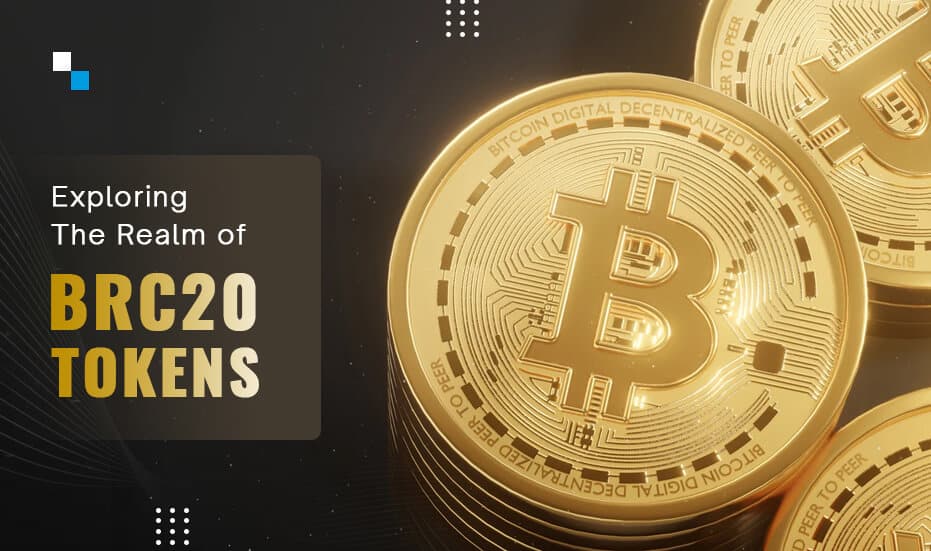BRC20 tokens or Bitcoin Request for Comment tokens have become an instant hit after the much-awaited launch on the Bitcoin blockchain on March 8, 2023. It’s the brainchild of a pseudonymous developer, Demo, and facilitates transfers of fungible tokens using the Bitcoin network.
ORDI is the first token to obey the BRC20 token standard. It was initiated as a meme and its current market cap has touched $500 million. There are more BRC20 tokens, such as PEPEBRC, MEME, VMPX, and PEPEBRC that are listed on the Gate.io crypto exchange that supports the BRC20 token standard.
Currently, when we compare the BRC20 token with ERC20, the offspring of Ethereum, the first thing we need to understand is that BRC20 uses Ordinals, a different protocol, to engrave data on the smallest unit of Bitcoin, satoshis. Unlike ERC20, the fees for transfers of BRC20 are usually higher due to the increased demand for Bitcoin transactions that leads to network congestion. However, both ERC20 and BRC20 are fungible tokens and exchangeable with other tokens of the same type.
BRC20 token development is a new experiment that provides more power in the hands of developers to create and send fungible tokens, along with meme coins, through Bitcoin’s ordinals protocol. Minting and transferring of tokens involves the deployment of token contracts based on Ordinal inscriptions of JSON data. While some Bitcoin maximalists are a bit reluctant to accept this new chapter of the Ordinals saga, it has brought a wave of excitement among the token creators and collectors who take it as an opportunity to use the analog of the ERC20 token standard.
Current State of BRC20
According to ORDSPACE, a total of 18266 tokens based on BRC20 token standards have been minted so far, and the market cap was $ 573,009,828.386 on May 11, 2023. The current status can be seen here:
Comparing BRC20 with ERC20
There are some striking dissimilarities between BRC20 and ERC20. Let’s understand:
- Both of them exist on separate blockchains. While Ethereum is the home for ERC20, BRC20 is Bitcoin based.
- ERC20 uses smart contracts, while BRC20 does not.
- Unlike ERC20, one needs a separate Bitcoin wallet to mint or trade BRC20 tokens.
- Based on the blockchains, ERC20 uses a Proof-of-Stake consensus mechanism while BRC20 uses a Proof-of-Work consensus mechanism.
- In the Proof-of-Stake mechanism, validators stake ETH to ensure the security of the network. On the other hand, the Proof-of-Work mechanism relies on the capability of miners to solve complex computational problems.
Common Terms Associated With BRC-20 Ecosystem
Here are the most commonly used terms related to BRC20:
- Ordinals Protocol: The Ordinals Protocol enables the arbitrary storage of data in a variety of formats on the Bitcoin network. Any information that has to be kept will be encoded in Satoshis (SAT), of which 1 BTC is made up of 100,000,000 SAT.
- Inscriptions: While using the Ordinals Protocol, inscriptions are the metadata that will be added to the Satoshis. These allow for the existence of data in a variety of formats on the public Bitcoin network, with a maximum data storage limit of 4 MegaBytes per Satoshi.
- Taproot Upgrade: The development of the BRC-20 token is based on the Taproot Upgrade, which was carried out on the Bitcoin network in 2021. This is because the standard takes advantage of a flaw that might ultimately prove beneficial. This upgrade’s main goal is to batch together numerous signatures and transactions for processing, which will make it simpler and faster to process transactions on the Bitcoin network.
Is BRC20 a Game Changer for Bitcoin?
Although BRC-20 is still in its evolutionary phase, it has tremendous potential to bring a change in the crypto world. Here’s how:
- Just like ERC20 tokens are ideally used for Initial Coin Offerings (ICOs), BRC20 can also be the right alternative for such projects and can be launched on the Bitcoin network.
- In the current scenario, meme coins are running parallel to native tokens.
- As BRC20 tokens can be used for transactions on the Bitcoin DeFi applications and platforms like Ordinals marketplace, its popularity is growing day by day.
Benefits of BRC20 Token Development
Here are some of the most common benefits of developing BRC20 tokens:
- BRC20 tokens are designed for fast and efficient transactions.
- As it uses the PoW mechanism it becomes harder for hackers to penetrate the security.
- It is easy to transfer tokens on the blockchain.
- BRC20 tokens lie on the decentralized platform and are not under the control of a single individual or entity. The crypto holder will have full control over the tokens.
Usage of BRC20 Tokens
Here are some common use cases of BRC20 tokens:
- Fundraising: Enterprises and startups can create BRC20 tokens for the purpose of fundraising.
- Trading: Just like various other cryptocurrencies, BRC20 tokens are tradable crypto assets.
- Making Payments: BRC20 tokens can be used to purchase products and services.
Conclusion
The rising popularity of BRC20 token development is a matter of curiosity for crypto enthusiasts. They want to understand the benefits of BRC20, before investing in their creation. Antier can help solve the mystery and also help in utilizing the best benefits of BRC20 tokens. Connect today!







